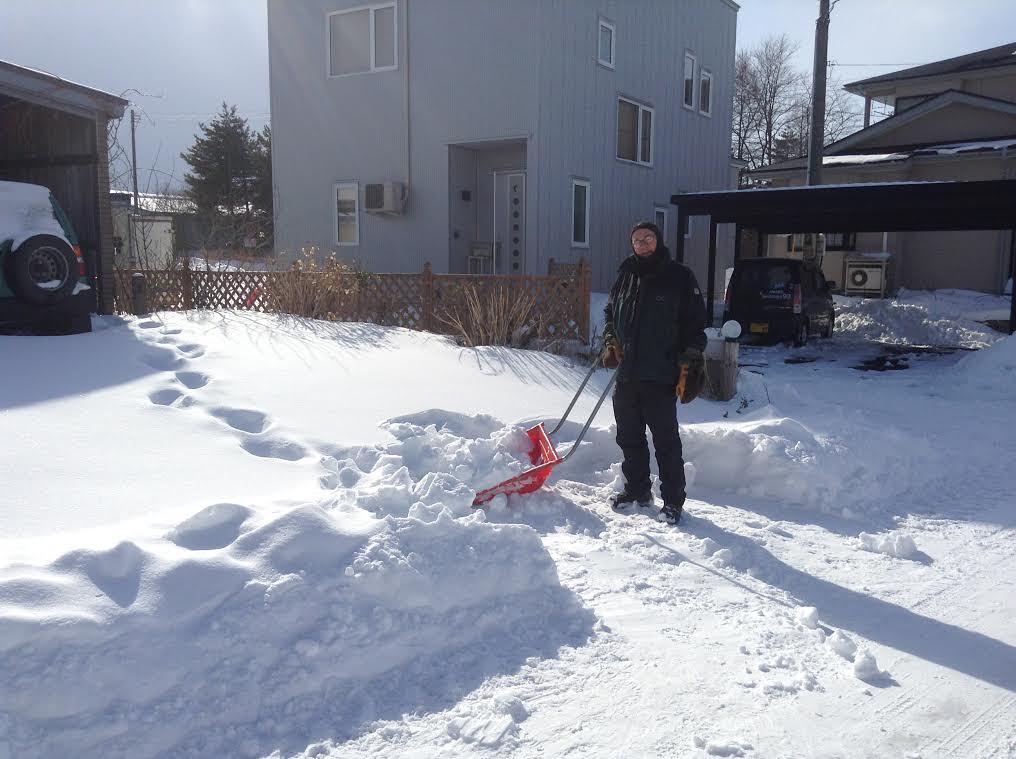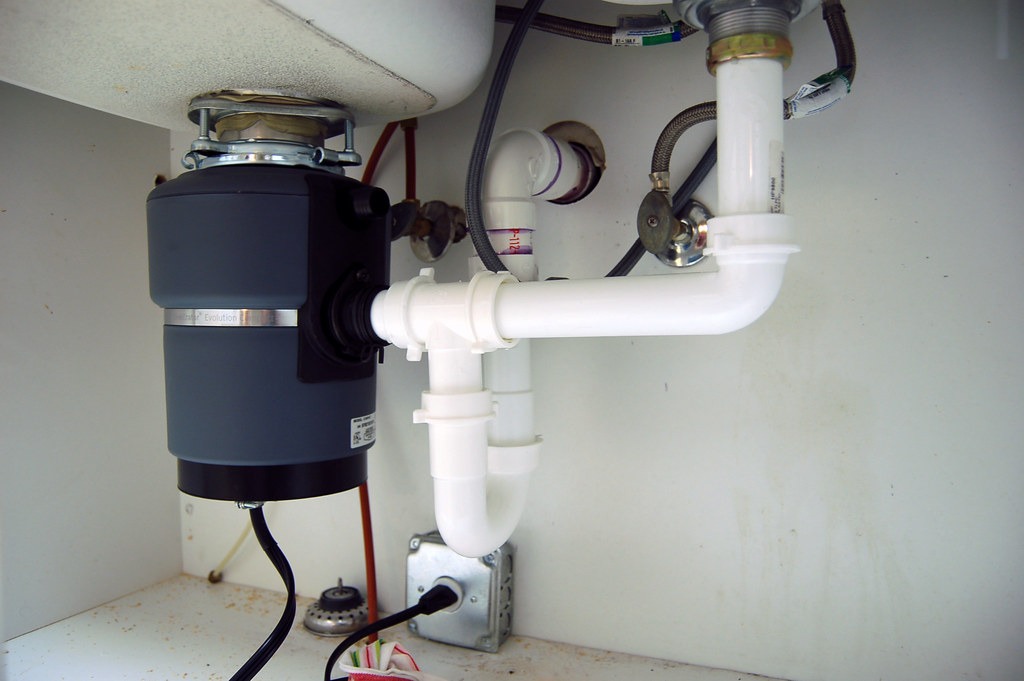Even if your driveway may already be paved, you might consider a heated system to install below. This is mainly due to the desire of wanting the convenience of not having to shovel snow during the winter seasons. Homeowners that can afford a heated system should expect to spend an average between $3500 to $3900.
The low-end range to install a heating system underneath your driveway is about $1400, while the high-end cost to install one is about $22400. So if you have more than enough money in your budget, you can have a heating system installed in no time. This kind of project will require professional assistance.
| Average Range | $3500-$3900 |
| Low-End Cost | $1400 |
| High-End Cost | $22400 |
The heating from off the driveway will melt away the pile of snow that has collected over the season. Costs will probably be determined by the size of the driveway, the material that was paved over the system, and the drainage that the area provides. For a heated driveway to work properly, all of these components must work in tandem with each other.
The factors that really affect the pricing of a heating system are the heating method, the automation or manual control of the system, and the inclusion of any additional designs. Other than the factors mentioned above, it will ultimately be these three factors that really impact the overall cost.
Table of Contents
How Much Does A Heated Driveway Cost
The cost of a heated driveway will probably range from $12 to $24 per square foot. For the size component of the pricing, you’ll see different costs according to the area you reside. One thing about this project that homeowners need to consider is whether this driveway is being newly paved or not. Keep in mind that the overall costs will be arranged with both the heated installation and the actual construction of your driveway.
Although, the cheapest option you’d have for a heating system is the low-performance heat mat that you’d have to construct yourself. There are about two types of heating frameworks to choose from: an electric coil system, and a hydronic system. Costs will vary depending on which one best suits your needs.
Cost For Heated System By Material
Different costs are actually associated with the different kinds of materials that are used for paving your driveway. Remember that contractors will add both the costs of paving and installing the system, so you’ll probably be looking at an average between $19 to $50 per square foot.
Asphalt
Out of the three choices to make when installing your heated system, the asphalt is considered to be the most inexpensive. While installing an asphalt driveway will probably range between $0.20 to $7 per square foot. This is only the material cost, depending on which type of asphalt you’re looking to install. By adding up the cost of installing the heated system for an asphalt driveway, the range you’ll probably encounter will be from $12 to $27 per square foot. However, if this is not a new driveway and you need to get rid of your current one, the average removal of asphalt costs between $1 to $3 per square foot.
If you include the costs of demolition and apply it to the overall range, you’ll likely be expecting an estimate of $13 to $30 per square foot. The reason why you’ll want an asphalt expert for this project is because asphalt can actually melt if left improperly handled. The hydronic tubing will likely be hot enough to liquify your asphalt. After your contractor is done with all of the installations and adjustments, you should find out whether the tubing was flushed with a cold liquid solution to cool the poured asphalt.
Concrete
Installing a concrete driveway will probably cost about $4 to $18 per square foot. This range also is dependent on the size of your driveway and what kind of concrete you’re likely to purchase. However, with the inclusion of installing a heated system for your driveway, the range will increase to $13 to $28 per square foot.
If you’re considering the installation for an existing driveway, the costs may actually be more than the range stated above. So whether you’re constructing a new driveway or replacing your old one, you’ll have to include the cost of demolishing your concrete driveway. Then, you’ll probably be expecting the range to be about $15 to $34 per square foot.
Pavers
Without the heated system underneath a driveway that is made with pavers, the installation will probably cost between $1 to $20 per square foot for the materials only. However, the range changes when you’re opting for a heated driveway, which would range from $19 to $50 per square foot. The installation overall will probably cost about $10 to $30 per square foot.
Depending on whether you’re looking to install brick or cobblestone, the prices associated will vary. Brick can range from just $1 to $2.50 per square foot. This is pretty inexpensive, yet when you consider the cost of cobblestone, you’ll be met with a range of $7 to $20 per square foot. Although, the pricing relies upon what kind of design and style you’d prefer to utilize in your space.
Electric Coil
Contractors and professionals will install a grid that is composed of heating cables. They’ll position from below the surface of the driveway, whichever material you decide to install. If properly handled, the system should radiate heat which will rise and melt any snow that is accumulating in front of your home.
For this system, you’re going to want to make sure that everything is done correctly, so you may need an electrician to correspond with your contracting specialist. Since these grids are made of complex circuitry, experienced individuals are what you’ll be looking for. Experts that will be able to determine whether your system needs a new panel or not. Ranging between $40 to $100 per hour, a professional electrician might be required to install new circuits. Meanwhile, upgrading the panel to a possible 400-amp panel will probably range between $2000 to $4000.
There are benefits and drawbacks to consider when contemplating which of the two systems might work best for you. An electric system takes much less time to start up so the response in the system will be much quicker. The drawback to this system is that you can only operate with electricity without the usage of other energy sources. You also may have to consider a separate circuit to install into the system.
Hydronic Coil
This kind of system uses a built-in boiler and heats up a combination of water and glycol, pumping hot liquid through a PEX tube. The substances then circulate throughout the rest of the area underneath your surface. Although this system involves higher costs to install and repair, since the fuel source is independently run, the operation costs will probably be lower.
To install a separate boiler, the average will probably range between $3200 to $9000. This is very important since the hydronic system will especially require this attachment. Practically the most pivotal aspect of this system is the boiler, you’ll want to ensure that the boiler is of good quality. Keep in mind that the costs associated with running the actual system depends on the energy source. Make sure to keep the boiler inside your home so that repairs can be made in a simpler manner, where annual inspections will be easier for you and your specialists.
A major advantage to hydronic systems is how flexible the system is with various energy sources. This means that, depending on the source of fuel being used, the costs to operate the system will be lower than the electric system. However, homeowners should keep in mind that hydronic heated driveways will have much slower responses and a lot more maintenance will be needed. Once you have this system in place, you’ll want to check on it regularly, making sure that the propylene glycol fluid levels are correct.

Type Of Energy Sources
There are about five energy sources for you to choose from, and depending on which one you choose, one kind of system will benefit more than the other. Since the running costs of a hydronic system depends on which energy source best fits the costs, you can assess whether one type outweighs the other.
Homeowners, depending on which fuel type they use throughout their own homes, can have separate sources set up for heated driveways. They can either use natural gas, electricity, oil, wood, or, under certain circumstances, solar. Each of these sources have a BTU circulation that makes the energy accessible to the heated systems.
Out of the ones mentioned, firewood is the one that costs the least per each million BTUs. While solar costs the most to run, the other three options have similar costs involved with running the heated driveways.
| Fuel Source | Cost Per Million BTU |
| Wood | $14 |
| Natural Gas | $15 |
| Oil | $20-$24 |
| Electricity | $16-$32 |
| Solar | $40+ |
If you’re installing a hydronic coil system, then you’ll likely have the choice of using solar as a fuel source for your driveway. However, keep these costs in mind when you decide to apply the convenience of reusable power. Although solar is eco-friendly, since the heated driveway is only necessary for the winter, you won’t really have to worry about disrupting the environment by using the other fuel sources that are available.
Unusable Sources
Although the electric coil system only powers itself through electricity, the hydronic coil system can draw out energy from a variety of different energy sources. However, this isn’t the case for these two sources listed below. Due to the need for large quantities of BTUs, homeowners should know that for snow to melt, there needs to be 100 to 150 BTUs per square foot required on the surface.
Geothermal Energy Source
Utilizing the earth’s temperature, the geothermal pumps use a certain medium from the constant extremity of heat and cold to power up the intended medium. Unfortunately, this also means that geothermal sources are not viable to use for a heated driveway since it can’t produce enough BTUs quickly enough.
Solar Energy Source
Although the hydronic system can still use solar energy as a source, it is actually very flawed. Not only does it cost an arm and a leg to run, but it isn’t practical if there is a snowstorm hindering the panels. It’s quite capricious to install an energy source that cannot be used when the medium it’s meant to power needs it.
Components Of Heated System
Although there are only two types of systems, there are actually four components that both systems cannot work without. A heated driveway will need a heating element, a power source, a controller for the system, and sensors to detect the temperature and moisture. The system will require all four parts for the surface to be a radiant heat source.
Retrofitting The Heated Driveway
If a homeowner should want to retrofit an existing driveway, they will have to hire a contractor to plan and cut a variety of saw cuts. Then, the contractor will install updated hardscape hardware over the cables that are added. A retrofitting project will probably cost between $7 to $8 per square foot and will be determined by the size of your driveway and the associated labor.
This kind of work will be even easier if the homeowner has electric cables rather than a hydronic system. Due to the thin diameter of the cables, the contractors will have a much simpler way of handling the system below the material that is already paved in the driveway. Essentially, what you’re going to end up doing is cutting grooves into your driveway, placing in the heating elements, and having the material sealed.
Drainage
The heated driveway’s sole purpose is to melt away the snow, but without expertly handled drainage in your driveway, the water that is left from the radiant heat will remain in your property. If the water isn’t tended to, the runoff of that water will eventually freeze into ice, making the other areas of your home dangerous to walk across.
Once the project for your driveway is completed, your contractor should assess the condition of the drainage. If the required drainage is lacking, the professional will probably dig a trench and install a drainage system that will work just as proficiently as the heated driveway. Homeowners should note that this additional work will likely result in an increase with the total cost.
Insulation
The contractor will probably know that this is a priority, however, you should make sure that there is insulation underneath the slab and in the exposed areas of its edges. If there is a lack of insulation in your driveway, you’re going to have to be expecting a reduction in heat loss into the ground. Typically, this will allow the surface to heat up with a quicker response, ultimately lowering the operation costs.
Automation or Manual Control
As written in previous articles, a heated driveway system can either be automated or operated through manual controls. If it is operable through automation, then whenever the temperature drops or if there is snow falling on the area, the system will activate. However, one reminder for homeowners to consider is the cost of programmable controls. You can expect an increased total of about $250 to $600 to have a programmable system installed.
If you have automation installed into the system, most likely, there will be automatic controllers connected to sensors that trigger the heating element. Ultimately, once it’s turned on, the system will automatically turn off once it determines when the snow will stop. Homeowners will not have to worry about their sensors being damaged since these devices can actually be mounted onto the slab.
It will cost more to purchase a more advanced system since they will likely have many sensors to set and regulate different portions of the driveway separately. These sensors will also be able to detect any moisture that originates from near freezing temperatures. They will typically figure out what the weather conditions are and whether the precipitation has stopped or the air temperature has risen.
Customizing Designs
If your driveway is already constructed with different colors and patterns, having them customized with the heat system set up will cost between $4 to $8 per square foot. Border with stone or brick pavers will probably range from $10 to $17 per square foot. However, this is to distinctly recreate the driveway you once clearly loved before.
Building Your Own Heating Mat
This is an option available to homeowners but there are many reasons as to why you shouldn’t consider building your own heating system. One drawback to building a shoddy replication is how much more work will go into creating this complex piece of equipment. You also have the option to purchase and own portable mats to heat the driveway. These platforms are designed, manufactured, and meant to withstand the weight of your vehicles.
Since the heating element is built in between the rubber material of the mats, it’s safe to use on any material and surface. You can even plug them in with a standard electrical outlet. The result of using a portable heating mat will be quite troubling once they need to be moved from outside of your driveway. Due to the weight of the mats, you won’t be able to carry or in this case, drag them back in without a few helping hands to assist you.
Although this is a less expensive alternative, portable heating mats are quite a pain to drive under. Rather than parking in your driveway without any care, you’ll have to be cautious and make sure that the tires align with the mats. Due to the way that these mats are designed, you’ll have to position your vehicle correctly every single time when you’re driving up to your home.
Permits
If you’re considering having a heated driveway installed into your home, you’ll have to think about which permits you might need. Depending on where you live, there may be a requirement under your city ordinates and building codes.
Finding Multiple Estimates Through House Tipster
One of the challenges of installing a heated driveway into your home is finding the right kind of professional assistance to help you. Remember, as mentioned before, the brunt of the work should go to experts. Since there are many incomprehensible tasks associated with installing a heated driveway, you should be on the lookout for contractors in the field. If this is a tedious task, consider using House Tipster.
Since this project would, in fact, require other experts, depending on the kind of heating system you want underneath your driveway, this web tool may very well be exactly what you need. Keep in mind that the electrical systems will need an electrician to work the intricate workings of wires and panels. Our online resources allow you to find multiple estimates in a short manner of time, no matter which professional you’re looking for.
A feature of ours gives the user the ability to search through reviews and find out whether that user will prefer one professional for the other. Simply find the experts that match your needs, look through their portfolio and their best showcases, and compare which one will fit your description for a competent professional.
Another feature that we provide is giving the user the ability to directly message their contractor or service specialist. Gone are the days when you’d have to individually contact your expert and ask dozens of different questions. For responses regarding estimates, scheduling, and business information, you can use our chat system and leave all of that worry behind. Try House Tipster and find out which projects that you’d been wanting to complete.
Featured Image By Thom Quine From Wikimedia Commons

























